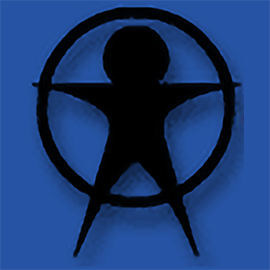Category:North America/Canada/Ontario/: Difference between revisions
New page: {{Coord|50.7|-86.05|display=title}} == Ontario == 50.7 -86.05<ref name=wikipedia>[http://en.wikipedia.org/wiki/Ontario,_Canada Ontario, Canada] Wikipedia.ORG. Accessed September 2009.</ref... |
No edit summary |
||
| Line 1: | Line 1: | ||
{{Coord|50.7|-86.05|display=title}} | {{Coord|50.7|-86.05|display=title}} | ||
== Ontario == | == Ontario == | ||
Ontario (pronounced /ɒnˈtɛəri.oʊ/) is a province located in east-central Canada, the largest by population and second largest, after Quebec, in total area. (Nunavut and the Northwest Territories are larger but are not provinces.) Ontario is bordered by the Canadian provinces of Manitoba to the west and Quebec to the east, and 5 U.S. states (from west to east): Minnesota, Michigan, Ohio, Pennsylvania (the latter two across Lake Erie) and New York to the south and east. Most of Ontario's 2,700 km (1,677 mi) long border with the United States runs along water, in the west the Lake of the Woods and eastward of there either on lakes or rivers within the Great Lakes drainage system: Superior, St. Marys River, Huron, St. Clair River, Lake St. Clair (sometimes referred to as the the sixth Great Lake), Erie, Ontario and then runs along the St. Lawrence River from near Kingston to near Cornwall. For analytical and geographical purposes Ontario is often broken into two regions, Northern Ontario, and Southern Ontario. The great majority of population and arable land in Ontario is located in the South, which contrasts with its relatively small land area in comparison to the North. | |||
The capital of Ontario is Toronto, Canada's most populous city and metropolitan area. Ottawa, the capital of Canada, is located in Ontario as well. The Ontario Government projected a population of 13,150,000 people residing in the province of Ontario as of July 2009. | |||
The province takes its name from Lake Ontario, which is thought to be derived from Ontarí:io, a Huron (Wyandot) word meaning "great lake", or possibly skanadario which means "beautiful water" in Iroquoian. The province contains over 250,000 freshwater lakes. Along with New Brunswick, Nova Scotia and Quebec, Ontario is one of the four original provinces of Canada when the federal nation was created July 1, 1867, when the British North America Act, 1867 (or 'BNA Act') came into force. Upon achievement of full independence from the United Kingdom in 1982, the BNA was re-christened the Constitution Act, 1867. | |||
Ontario is Canada's leading manufacturing province accounting for 52% of the total national manufacturing shipments in 2004. Ontario's largest trading partner is the American state of Michigan.<ref name=wikipedia>[http://en.wikipedia.org/wiki/Ontario,_Canada Ontario, Canada] Wikipedia.ORG. Accessed September 2009.</ref> | |||
== Gallery == | == Gallery == | ||
Latest revision as of 02:28, 22 September 2009
Ontario
Ontario (pronounced /ɒnˈtɛəri.oʊ/) is a province located in east-central Canada, the largest by population and second largest, after Quebec, in total area. (Nunavut and the Northwest Territories are larger but are not provinces.) Ontario is bordered by the Canadian provinces of Manitoba to the west and Quebec to the east, and 5 U.S. states (from west to east): Minnesota, Michigan, Ohio, Pennsylvania (the latter two across Lake Erie) and New York to the south and east. Most of Ontario's 2,700 km (1,677 mi) long border with the United States runs along water, in the west the Lake of the Woods and eastward of there either on lakes or rivers within the Great Lakes drainage system: Superior, St. Marys River, Huron, St. Clair River, Lake St. Clair (sometimes referred to as the the sixth Great Lake), Erie, Ontario and then runs along the St. Lawrence River from near Kingston to near Cornwall. For analytical and geographical purposes Ontario is often broken into two regions, Northern Ontario, and Southern Ontario. The great majority of population and arable land in Ontario is located in the South, which contrasts with its relatively small land area in comparison to the North.
The capital of Ontario is Toronto, Canada's most populous city and metropolitan area. Ottawa, the capital of Canada, is located in Ontario as well. The Ontario Government projected a population of 13,150,000 people residing in the province of Ontario as of July 2009.
The province takes its name from Lake Ontario, which is thought to be derived from Ontarí:io, a Huron (Wyandot) word meaning "great lake", or possibly skanadario which means "beautiful water" in Iroquoian. The province contains over 250,000 freshwater lakes. Along with New Brunswick, Nova Scotia and Quebec, Ontario is one of the four original provinces of Canada when the federal nation was created July 1, 1867, when the British North America Act, 1867 (or 'BNA Act') came into force. Upon achievement of full independence from the United Kingdom in 1982, the BNA was re-christened the Constitution Act, 1867.
Ontario is Canada's leading manufacturing province accounting for 52% of the total national manufacturing shipments in 2004. Ontario's largest trading partner is the American state of Michigan.[1]
Gallery
References
- ↑ Ontario, Canada Wikipedia.ORG. Accessed September 2009.
Subcategories
This category has the following 11 subcategories, out of 11 total.
N
- North America/Canada/Ontario/Barrie/
- North America/Canada/Ontario/Bowmanville/
- North America/Canada/Ontario/Brampton/
- North America/Canada/Ontario/Hamilton/
- North America/Canada/Ontario/Kingston/
- North America/Canada/Ontario/London/
- North America/Canada/Ontario/Markham/
- North America/Canada/Ontario/Mississauga/
- North America/Canada/Ontario/Ottawa/
- North America/Canada/Ontario/Scarborough/
- North America/Canada/Ontario/Toronto/

